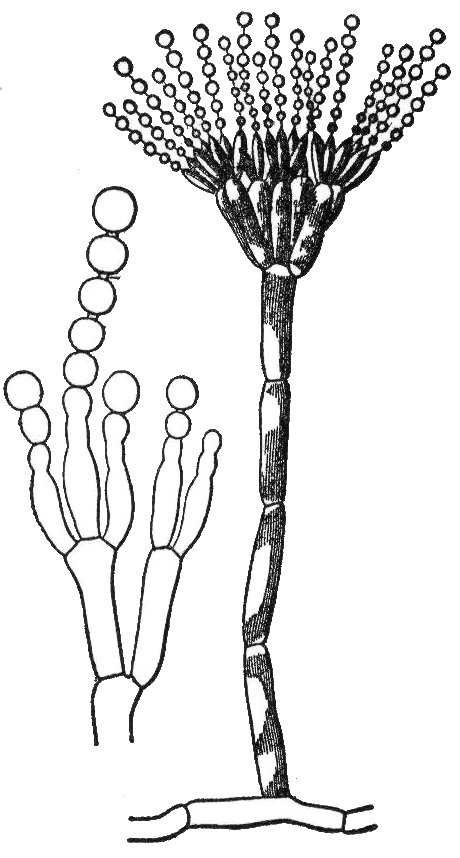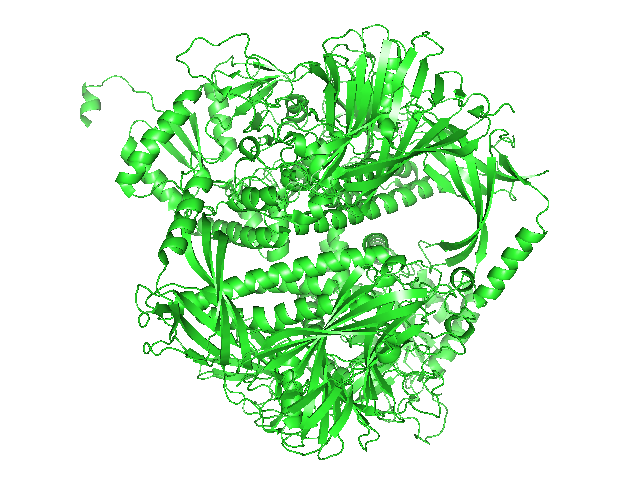|
Gliomastix Murorum
''Gliomastix murorum'' is one of four species of fungus in the genus ''Gliomastix''. ''G. murorum'' is a type of saprophyte. One of the techniques that is used to isolate this fungus is through dilution plate. History and taxonomy In the past, there have been some confusions regarding which genus ''G. murorum'' should be part of. Over the years, Names of ''G. murorum'' have changed numerous times. In 1905, in order to accommodate species, ''Torula chartarum'' Corda, Gueguen erected form-genus ''Gliomastix''. At first, ''G. chartarum'' and ''T. chartarum'', a same fungus as ''T. convoluta'', were thought to be two different fungi. However, Mason concluded G. chartarum is synonymous to ''G. convoluta'', which is the same fungus as the T. convoluta. and Hughes and Dickinson eventually listed all of them as a species called G. murorum and listed them to be synonymous to one another. The proposal stating ''Gliomastix'' is the same genus as Acremonium was not accepted. Also, placing G ... [...More Info...] [...Related Items...] OR: [Wikipedia] [Google] [Baidu] |
Acremonium
''Acremonium'' is a genus of fungi in the family Hypocreaceae. It used to be known as ''Cephalosporium''. Description ''Acremonium'' species are usually slow-growing and are initially compact and moist. Their hyphae are fine and hyaline, and produce mostly simple phialides. Their conidia are usually one-celled (i.e. ameroconidia), hyaline or pigmented, globose to cylindrical, and mostly aggregated in slimy heads at the apex of each phialide. '' Epichloë'' species are closely related and were once included in ''Acremonium'', but were later split off into a new genus '' Neotyphodium'', which has now been restructured within the genus '' Epichloë''. Clinical significance The genus ''Acremonium'' contains about 100 species, of which most are saprophytic, being isolated from dead plant material and soil. Many species are recognized as opportunistic pathogens of man and animals, causing eumycetoma, onychomycosis, and hyalohyphomycosis. Infections of humans by fungi of this ge ... [...More Info...] [...Related Items...] OR: [Wikipedia] [Google] [Baidu] |
Conidia
A conidium ( ; ), sometimes termed an asexual chlamydospore or chlamydoconidium (), is an asexual, non-motile spore of a fungus. The word ''conidium'' comes from the Ancient Greek word for dust, ('). They are also called mitospores due to the way they are generated through the cellular process of mitosis. The two new haploid cells are genetically identical to the haploid parent, and can develop into new organisms if conditions are favorable, and serve in biological dispersal. Asexual reproduction in ascomycetes (the phylum Ascomycota) is by the formation of conidia, which are borne on specialized stalks called conidiophores. The morphology of these specialized conidiophores is often distinctive between species and, before the development of molecular techniques at the end of the 20th century, was widely used for identification of (''e.g.'' '' Metarhizium'') species. The terms microconidia and macroconidia are sometimes used. Conidiogenesis There are two main types of coni ... [...More Info...] [...Related Items...] OR: [Wikipedia] [Google] [Baidu] |
Water Potential
Water potential is the potential energy of water per unit volume relative to pure water in reference conditions. Water potential quantifies the tendency of water to move from one area to another due to osmosis, gravity, mechanical pressure and matrix effects such as capillary action (which is caused by surface tension). The concept of water potential has proved useful in understanding and computing water movement within plants, animals, and soil. Water potential is typically expressed in potential energy per unit volume and very often is represented by the Greek letter ψ. Water potential integrates a variety of different potential drivers of water movement, which may operate in the same or different directions. Within complex biological systems, many potential factors may be operating simultaneously. For example, the addition of solutes lowers the potential (negative vector), while an increase in pressure increases the potential (positive vector). If the flow is not res ... [...More Info...] [...Related Items...] OR: [Wikipedia] [Google] [Baidu] |
Peat
Peat (), also known as turf (), is an accumulation of partially decayed vegetation or organic matter. It is unique to natural areas called peatlands, bogs, mires, moors, or muskegs. The peatland ecosystem covers and is the most efficient carbon sink on the planet, because peatland plants capture carbon dioxide (CO2) naturally released from the peat, maintaining an equilibrium. In natural peatlands, the "annual rate of biomass production is greater than the rate of decomposition", but it takes "thousands of years for peatlands to develop the deposits of , which is the average depth of the boreal orthernpeatlands", which store around 415 gigatonnes (Gt) of carbon (about 46 times 2019 global CO2 emissions). Globally, peat stores up to 550 Gt of carbon, 42% of all soil carbon, which exceeds the carbon stored in all other vegetation types, including the world's forests, although it covers just 3% of the land's surface. '' Sphagnum'' moss, also called peat moss, is one of ... [...More Info...] [...Related Items...] OR: [Wikipedia] [Google] [Baidu] |
Metabolite
In biochemistry, a metabolite is an intermediate or end product of metabolism. The term is usually used for small molecules. Metabolites have various functions, including fuel, structure, signaling, stimulatory and inhibitory effects on enzymes, catalytic activity of their own (usually as a cofactor to an enzyme), defense, and interactions with other organisms (e.g. pigments, odorants, and pheromones). A primary metabolite is directly involved in normal "growth", development, and reproduction. Ethylene exemplifies a primary metabolite produced large-scale by industrial microbiology. A secondary metabolite is not directly involved in those processes, but usually has an important ecological function. Examples include antibiotics and pigments such as resins and terpenes etc. Some antibiotics use primary metabolites as precursors, such as actinomycin, which is created from the primary metabolite tryptophan. Some sugars are metabolites, such as fructose or glucose, which ar ... [...More Info...] [...Related Items...] OR: [Wikipedia] [Google] [Baidu] |
Antimicrobial
An antimicrobial is an agent that kills microorganisms or stops their growth. Antimicrobial medicines can be grouped according to the microorganisms they act primarily against. For example, antibiotics are used against bacteria, and antifungals are used against fungi. They can also be classified according to their function. Agents that kill microbes are microbicides, while those that merely inhibit their growth are called bacteriostatic agents. The use of antimicrobial medicines to treat infection is known as antimicrobial chemotherapy, while the use of antimicrobial medicines to prevent infection is known as antimicrobial prophylaxis. The main classes of antimicrobial agents are disinfectants (non-selective agents, such as bleach), which kill a wide range of microbes on non-living surfaces to prevent the spread of illness, antiseptics (which are applied to living tissue and help reduce infection during surgery), and antibiotics (which destroy microorganisms within the body ... [...More Info...] [...Related Items...] OR: [Wikipedia] [Google] [Baidu] |
Volatile Oil
An essential oil is a concentrated hydrophobic liquid containing volatile (easily evaporated at normal temperatures) chemical compounds from plants. Essential oils are also known as volatile oils, ethereal oils, aetheroleum, or simply as the oil of the plant from which they were extracted, such as oil of clove. An essential oil is essential in the sense that it contains the essence of the plant's fragrance—the characteristic fragrance of the plant from which it is derived. The term "essential" used here does ''not'' mean indispensable or usable by the human body, as with the terms essential amino acid or essential fatty acid, which are so called because they are nutritionally required by a living organism. Essential oils are generally extracted by distillation, often by using steam. Other processes include expression, solvent extraction, '' sfumatura'', absolute oil extraction, resin tapping, wax embedding, and cold pressing. They are used in perfumes, cosmetics, soaps, a ... [...More Info...] [...Related Items...] OR: [Wikipedia] [Google] [Baidu] |
Alpha-mannosidase
alpha-Mannosidase (, ''alpha-D-mannosidase'', ''p-nitrophenyl-alpha-mannosidase'', ''alpha-D-mannopyranosidase'', ''1,2-alpha-mannosidase'', ''1,2-alpha-D-mannosidase'', ''exo-alpha-mannosidase'') is an enzyme involved in the cleavage of the alpha form of mannose. Its systematic name is ''alpha-D-mannoside mannohydrolase''. Isozymes Humans express the following three alpha-mannosidase isozymes In biochemistry, isozymes (also known as isoenzymes or more generally as multiple forms of enzymes) are enzymes that differ in amino acid sequence but catalyze the same chemical reaction. Isozymes usually have different kinetic parameters (e.g. dif ...: Applications It can be utilized in experiments that determine the effects of the presence or absence of mannose on specific molecules, such as recombinant proteins that are used in vaccine development. Pathology A deficiency can lead to alpha-mannosidosis. References External links GeneReviews/NCBI/NIH/UW entry on Alpha-Mann ... [...More Info...] [...Related Items...] OR: [Wikipedia] [Google] [Baidu] |

.jpg)


